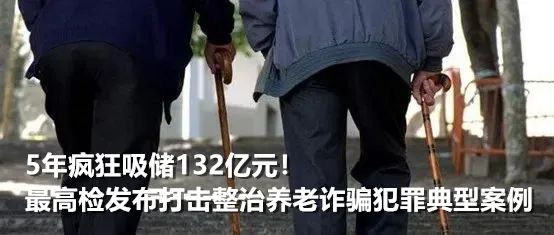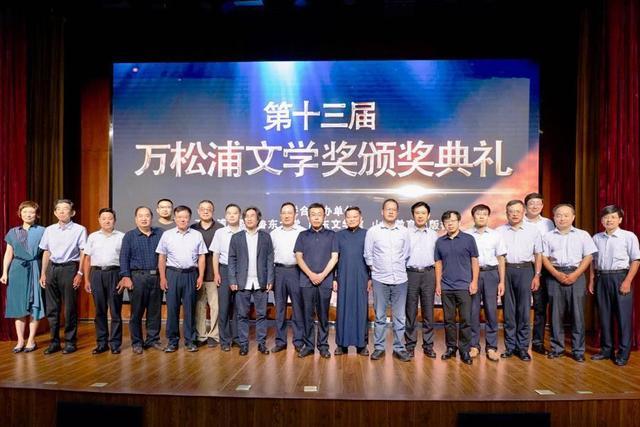Literature and text comparative method: study a new perspective of language changes
Author:China Social Sciences Network Time:2022.06.14
Literature text, or due to the different version of the documentation, the reference in the process of copying, or due to the different purpose of the editorial editor, the flow method is diverse. Therefore, the literature text has produced multiple text phenomena, especially the multi -text and multi -channel transmission of the revision and adaptation of different authors in the same era, or the revision and adaptation of different authors in the same era. Among them, different versions of the text formed by words, words, and sentence methods record a certain clue of language changes, which has become a valuable literature we understand the durability of language culture. The texts mentioned here refer to the same version, quotes, or synonymous texts in different versions, citations or annotations. Different versions (including the original and revised books), different quotes (different eras), the interpretation of the injecting, and the different words of the text of the same concept on the words of the same concept on the vocabulary, so the same concept can be used in different words. Express, forming a large number of different texts (synonymous replacement relationships, new and old ingredient coexisting phenomena) and so on. The multi -party interpretation of "different texts" has become an important method for linguistic research, and it is also an important topic of linguistic research. The comparison of literature text is based on the richness of the multi -text corpus of the literature, comprehensive comparison between multiple versions, and has become a research method of vocabulary and grammar.
Comparison based on homogeneous non -communist literature text
Taking the Yuan and Ming dynasties as an example, this is a period of more important period in the development of Chinese. The same literature and multi -text corpus are rich. It is the "rich mine" we engaged in language research. With the different version of the same version of the same document comparison, based on the language phenomenon as the base point, through a large number of language facts comparison, you can find that the Chinese literature in the Yuan and Qing dynasties uses the positive and vulgar, the language of the language, the dialect, the region There are various changes such as the differences between the south and the north. These changes also reflect the characteristics and laws of Yuan Mingqing's official words.
For example, between the "Thirty Miscellaneous Drama" and the Yuan Song Selection are a kind of homogeneous rather than the time. The former was created by the authors of the Yuan Dynasty, and the latter was collected and edited by Uncle Zang Jin. Compare the relevant fragments of "Yuan Song Selection" and the thirteen of the same script in the same script in the same script in the same script in the same script in the same script. The objects of the reader, the expression habits, and the language style both have specific purpose. Specifically, the same sounds in the writing are as uniform and regular as possible, and the common words that are elegant instead of folk saying are selected. Language expression is far more orthodox than "Thirty Miscellaneous Drama". This reverse the popularity and spoken language of the language of "Thirty Miscellaneous Drama". At the same time, the language phenomenon of newly produced in the Ming Dynasty was used in "Yuanqu Selection"; the alternative of the language phenomenon of the Ming Dynasty on the rise of the Ming Dynasty also appeared. For example, assuming that the auxiliary word "time" is used again, instead of the Yuan Dynasty's "ha". The new language in the Yuan Dynasty was generally used in the Ming Dynasty, which was reflected in the different texts of the Yuan Song Selection.
Literature and text comparison based on textbooks
During the Yuan and Qing Dynasties, there were various associated and multi -texts in overseas Chinese textbooks, which was a very important research literature in this period. The text of the text reveals the clues of vocabulary and grammar. For example, the "Beijing" from the "Dadu" of the Yuan Dynasty to the "Beijing" (1761) in the Yuan Dynasty of the Yuan Dynasty, the name changed as changes in the times. A batch of correspondence vocabulary reflects the vocabulary changes in different periods of Yuanming and Qing Dynasties. The two types of Chinese and white comparison of "Training World Evaluation" (1743) correspondingly corresponding to the words of the relationship between the relationship and vernacular words, which provides first -hand information for the evolution of Yuanming's word meaning.
The "Language Self -Collection · Talking Article" (1867) edited by Wiefima's Wakma (1867) conducted a full text of the Chinese text of the "Qing Dynasty Finger" (1789). North Koreans are adapted into the textbooks of Beijing and North Korea to study Beijing's official dialect, which also provides reference texts that study early Beijing official words and sentences. The Chinese adaptation of "Qingwen Shi Yao" has produced a number of texts from the Chinese -style Chinese language adaptation of Beijing official dialect, such as the Japanese in Guangshang's "Asian Asian Essentials · Talk" (1881), and the Japanese Fukushima 90 % of the "Participate in the booking" "Chinese Questions and Answers" (1892), and Korean Song Xianzhang's "Talking" (1921), etc., edited "Self -study" (1921), etc., revealing many clues to various phenomena in the process of some Chinese translations.
"Guide to the Mandarin" (1881) from Beijing's official text to Nanjing official dialect text, and then to the corresponding translation text of the Shanghai -speaking "Tu Dian Guide" (1889) and Cantonese "Cantonese" (1895) The corresponding relationship is displayed one by one. In the "Guide to the Mandarin" and Shanghai and Cantonese, the synonyms of vocabulary are rich in content. The official dialect and dialects are translated by sentence, and also opened a door for us to learn dialects and understand dialects. The regional differences between this different text vocabulary reveal their interaction relationship between them in different historical periods. It is the corresponding comparison between these multi -text language phenomena that adds new content to the study of language changes.
Novel -based literature comparison
The local vernacular novels "Jin Ping Mei", "Journey to the West", "Dream of Red Mansions" and "Children's Heroes" all have different texts. For example, the words and Chongzhen books of "Jin Ping Mei" have not changed much in content. The biggest change is in terms of words: the former uses vulgar characters, and the latter mostly uses positive characters, which reflects the different styles of vulgarity and elegance. For example, the meaning of "eating", "suffering", "passive", "cause", etc., the word "begging" in the word "Jin Ping Mei" is mixed with the word "eating", but the "Jin Ping Mei" Chongzhen Book is basically in the "Begging" place in the word "Begging" The word "eat" is used. When the words are "begging", the words "eat", "suffer", "passive", "cause", "begging" meanings are not different in the use of words, and the changes in Chongzhen's book are "eating", "suffering", "suffering", "suffering", "suffering", "suffering" The words of passive "cause" meaning "eat" in the form of writing, which means "begging and obtaining" meaning in the form of writing as "begging". word. This phenomenon also has similar performance in the three versions of "Water Margin". Its capacity and doter and Apocalypse indicate the meaning of "eating", "suffering", "passive", "cause", "begging", "begging" and "eating" mixed, and in the Guan Huatang book, "eating", "suffering", "passive" The "reason" basically uses "eating", indicating that "begging" is basically "begging". This reflects that the words "Jin Ping Mei", "Water Margin" Rong and Tangben, and Apocalypse are customs, and "Jin Ping Mei" Chongzhen Book and "Water Margin" Guan Huatang used characters, forming different texts in text use The elegant vulgar is divided into wild. There are many versions of "Dream of Red Mansions". Cheng Jiaben (1791) and Cheng Yiben (1792) are only 70 days apart. The text of B's text is 19568 words. Liu Baoxia investigated the first 80 times of Gengchen, Cheng Jiaben, and Cheng Yiben's vocabulary and different essays of "Dream of Red Mansions". The use of the two texts produced between the two texts and the Chinese textbook "Guide to the Mandarin" north -south version of the two texts produced by the two texts of the two texts of the two texts of this " The common words of Cheng Yi are biased towards the northern official. Therefore, Cheng Jiaben and Cheng Yiben have the regional characteristics of southern officials and northern officials in the use of common words.
Literature and text comparison based on translation
The ancient Greek "Isso Fables" was circulated worldwide. During the Ming and Qing Dynasties, the fable stories represented by "Isso Fables" were gradually introduced to China. They were even translated as textbooks for learning Chinese, with classical Chinese translations and vernacular translations. In the translation of classical Chinese, the British Luo Bozhen and his Chinese teacher Meng Mo translated "Saying Metaphor" (1840) for a total of 82, and the Japanese textbook of Mingzhi Chinese textbooks in Japanese textbooks "Yisp Meter" (1878) a total of 237 articles , Zhang Ye's record of 70 (1888), a total of 70, the history of Mei couple (Qiu Yufang) in the "Wuxi Vernacular News" contains a vernacular "Beauty Metaphor" (1898), Lin Shu and others translated "Yi There are 300 (1903). Their related charts also clearly show the clues of language changes from classical Chinese, Qian Wenyan to vernacular translation and north -south officials. Therefore, the comparison of the text of the same mother in different periods opened a door for historical linguistics research, and we should open our minds to embrace them.
In the changes in literature and text, there are inextricable relationships between the origin and the derivative, association, and changes between the text, and the differences between the differences or even the personality differences of the author's language. Each text of language expression can show the development clues of vocabulary or grammar. This allows us to study from the static research of a single text to the dynamic comparison of multi -text; it can also allow us Become the source of "useful" research. In addition, we can find the characteristics of language development and language contact. Because of this, they provide important clues in the process of language history and enhance people's awareness of the problem of language phenomena. Through a large amount of material comparison, the laws are presented, so that many of the phenomena that are implicitly implicitly informed in a single literature are revealed. The comparative method of literature and text expands the depth and breadth of academic research on language changes, continuously increases available materials, enrich the problems that can be considered, and gradually become a new perspective of our exploration of language development and changes.
(Author unit: Chinese Department of Hong Kong Baptist University)
Source: China Social Science Network-Journal of Social Sciences of China
Author: Zhang Meilan
- END -
Super combustion mixed cut!The scene in the law enforcement recorder is more intense than the movie

AnteriorChang'an Jun (ID: Changan-J): Squatting, bullets in the rain night, bullet...
The 13th "Wan Songpu Literature Award" awards ceremony was held

On June 12, the 13th Wan Songpu Literature Award award ceremony was held at Shando...